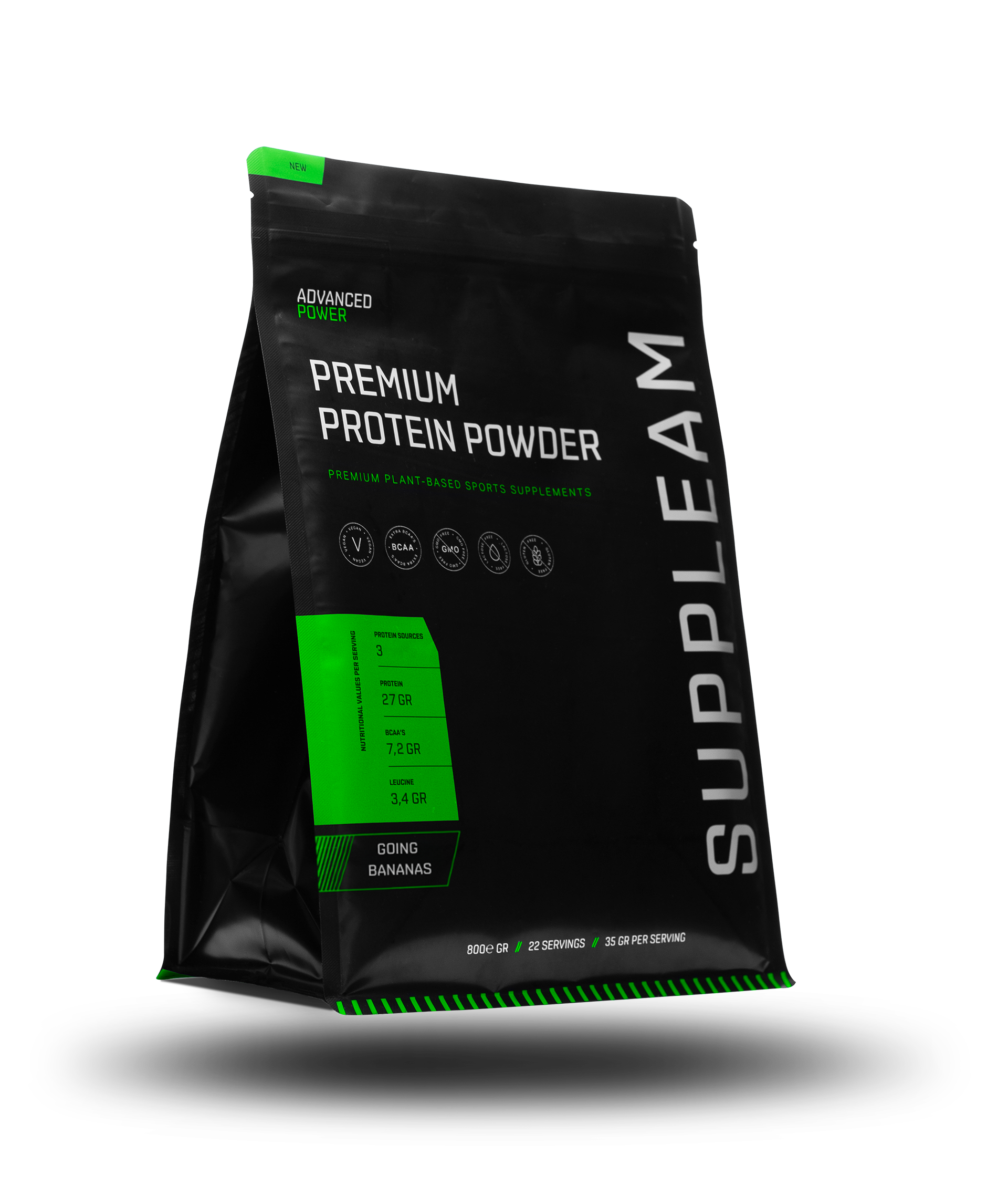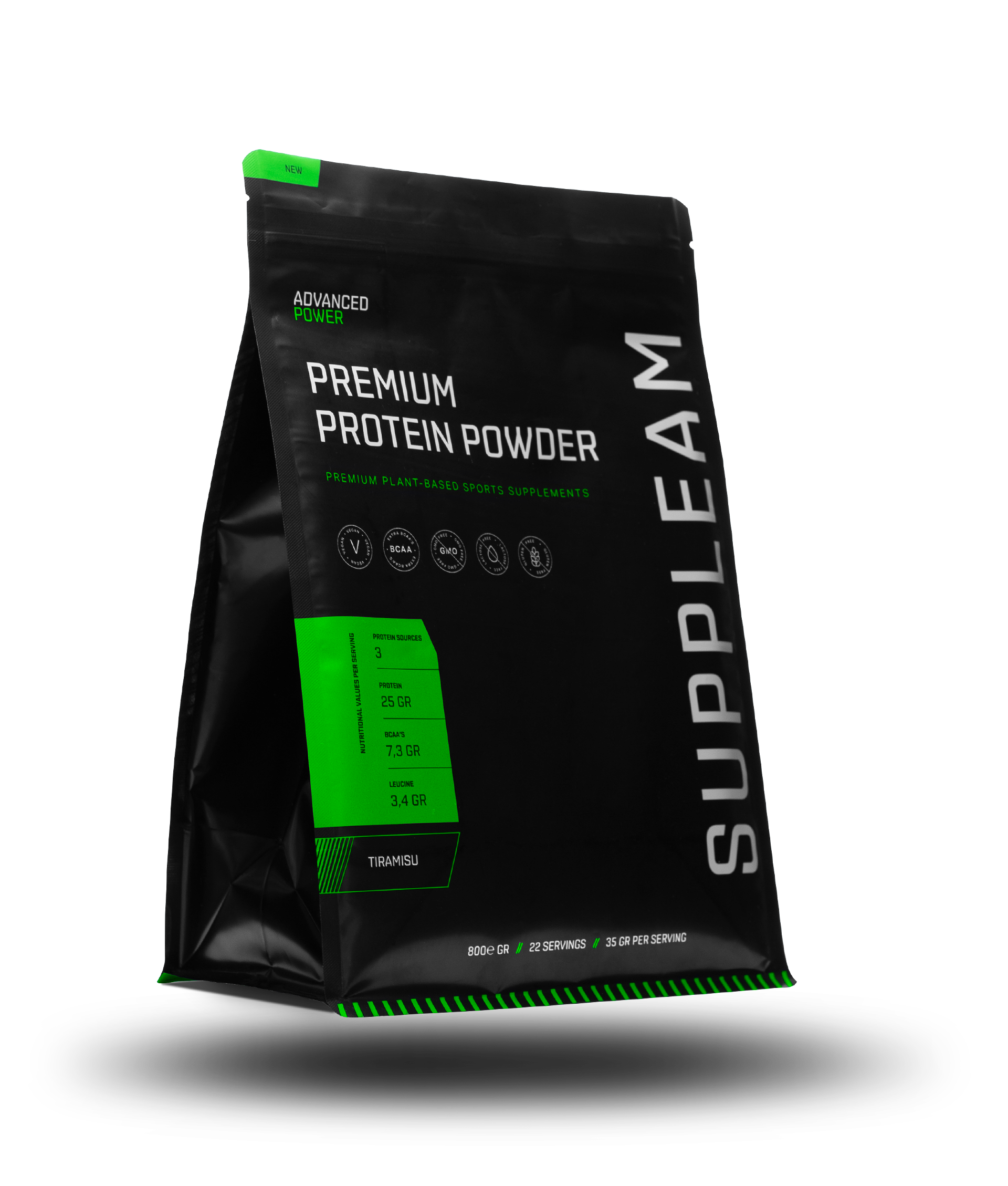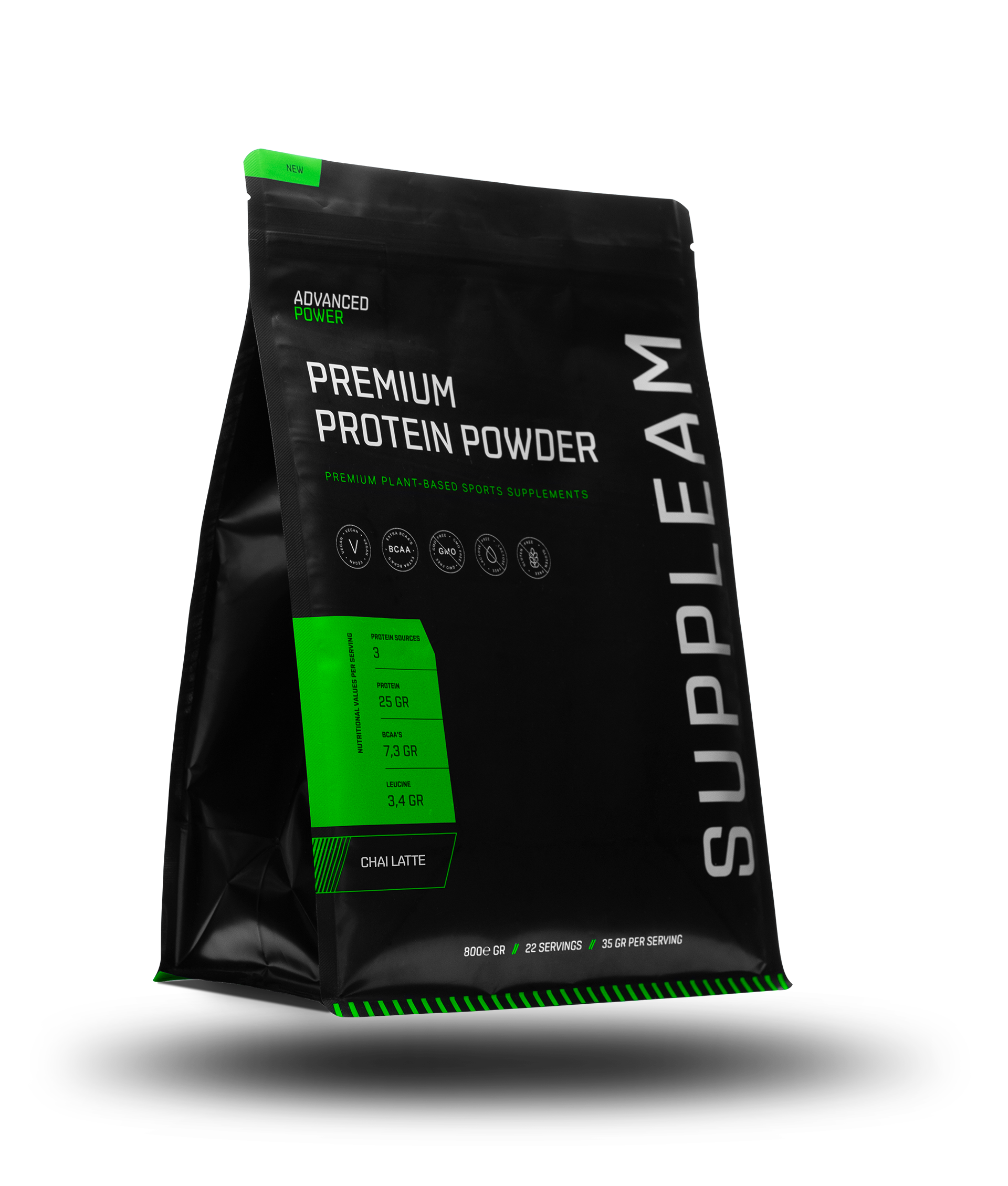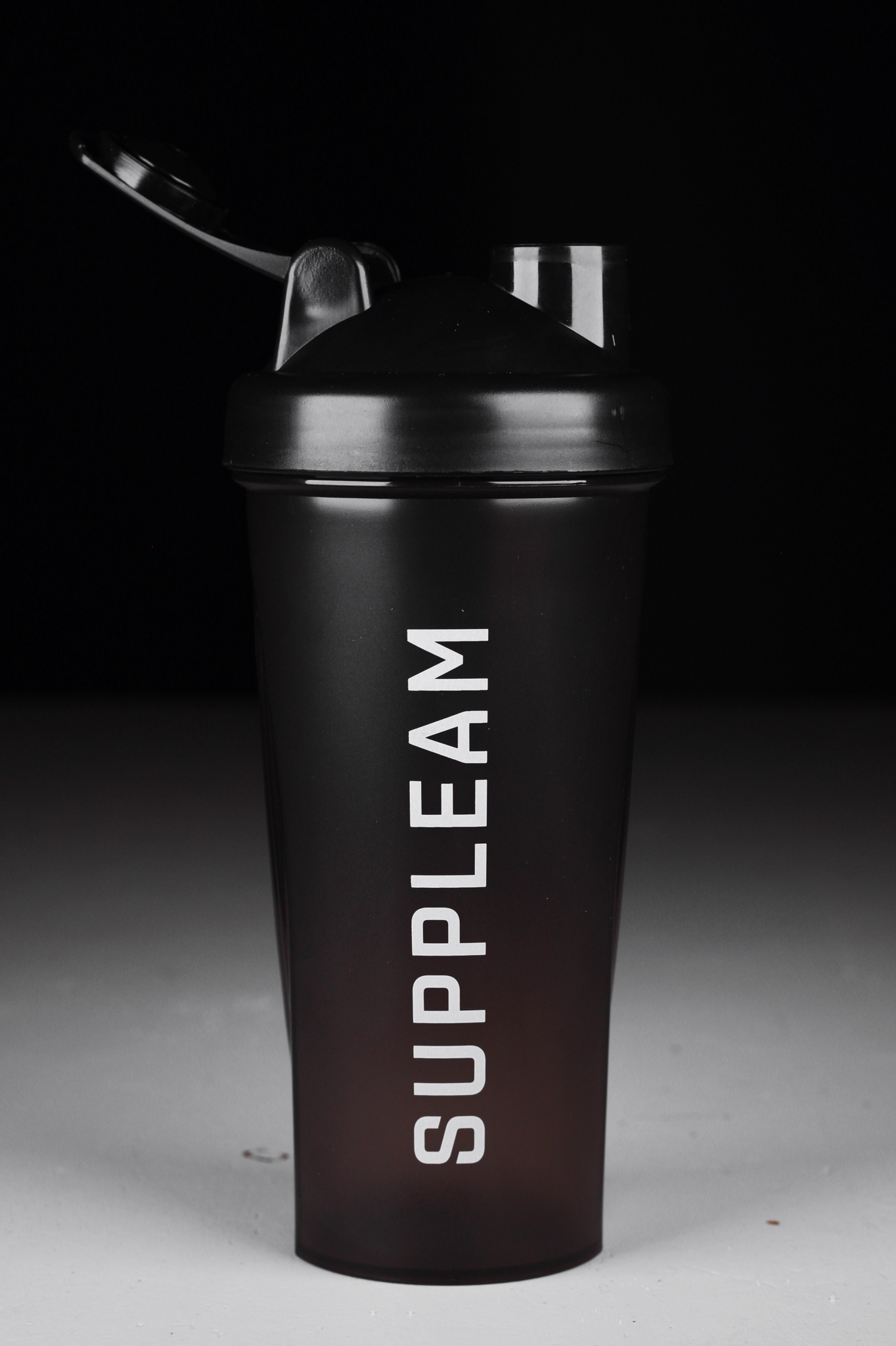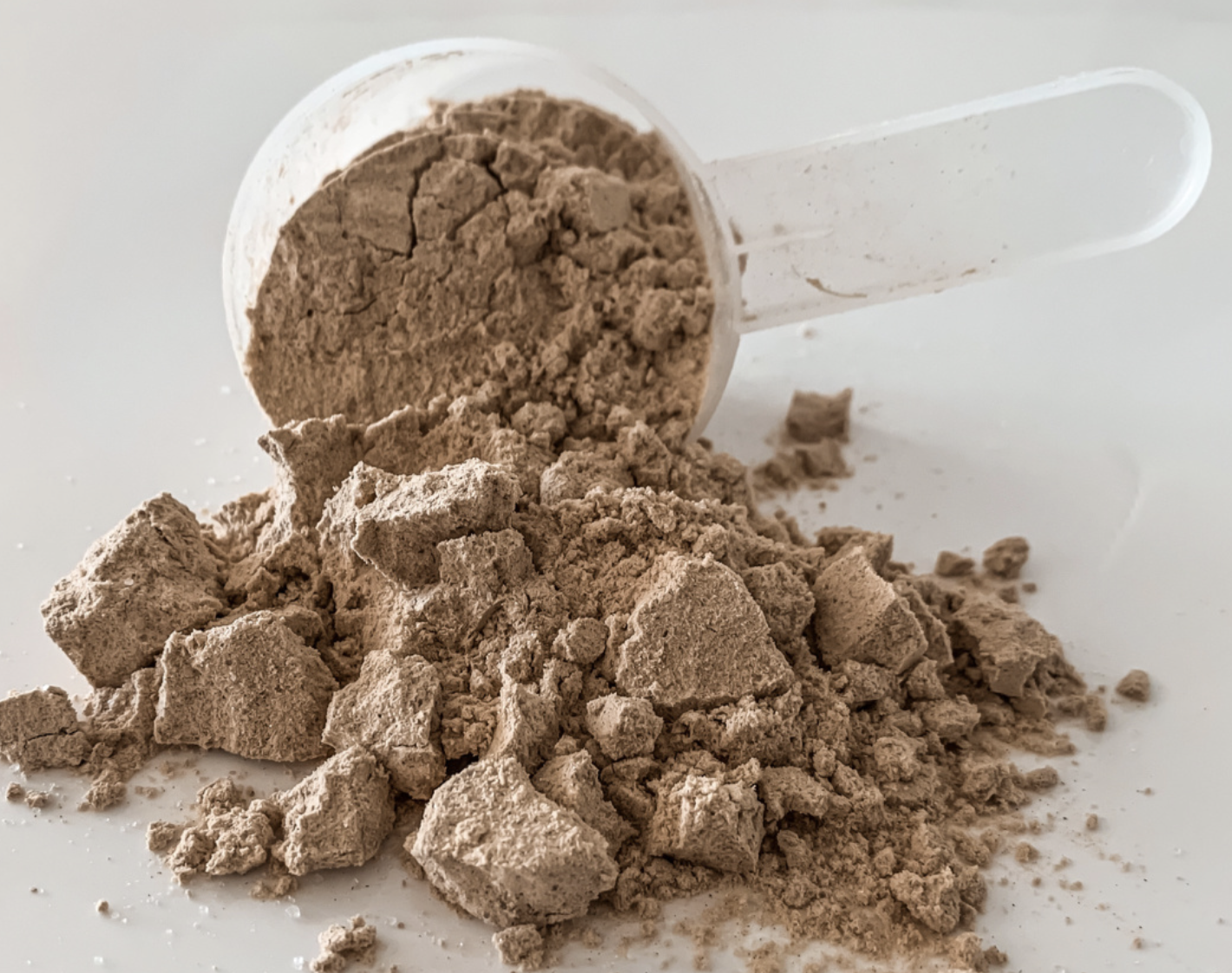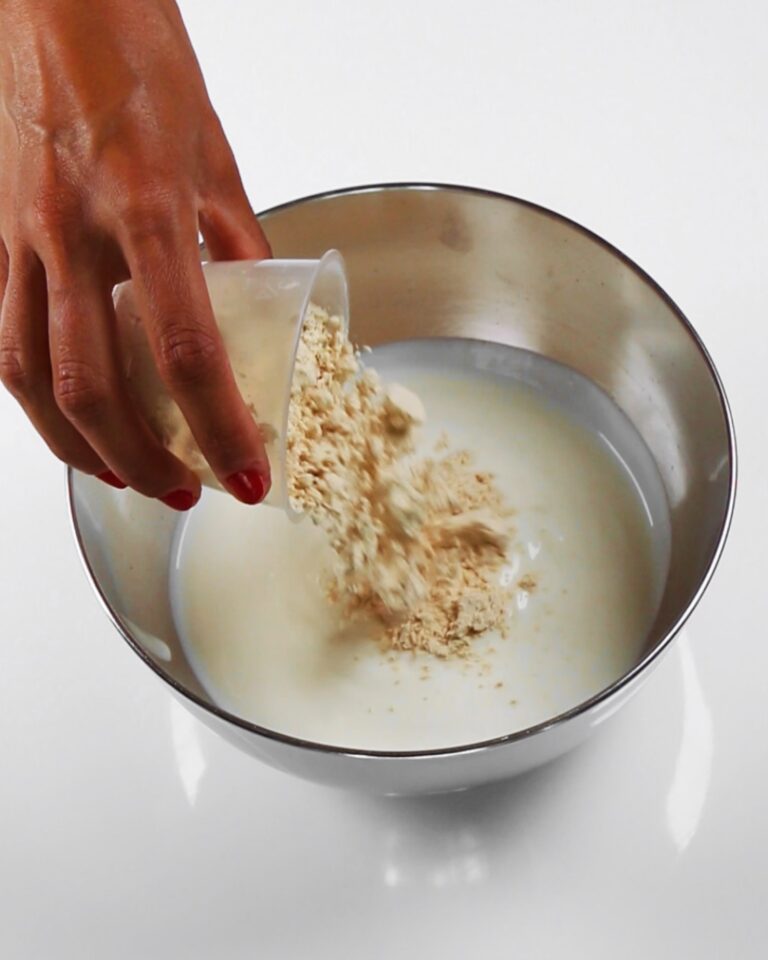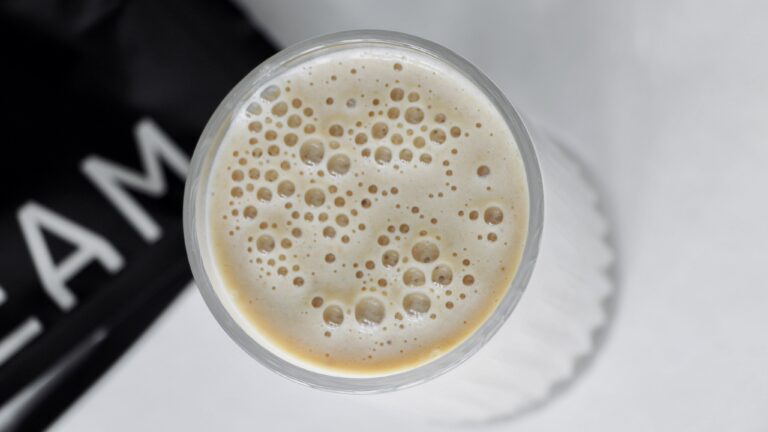Get the most out of your protein shakes! Discover the optimal time to drink a protein shake for maximum effectiveness. Sports dietitian Angela Oosterling shares insights about timing, intake and the use of vegan protein shakes before, during and after training.
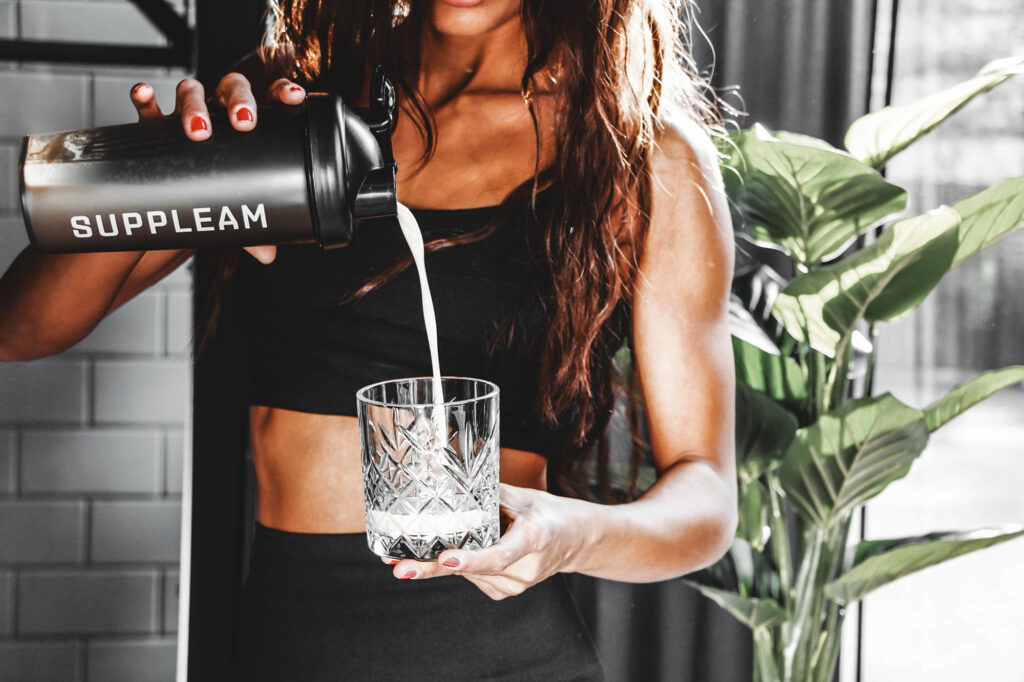
Written by A.L. Oosterling BSc sports dietitian, NSCA-CPT, ISAK anthropometrist
what are proteins good for?
Proteins are the building blocks of the body. They are essential for building and repairing muscles and cells, supporting the immune system and producing enzymes and hormones.
What are protein shakes good for?
Protein shakes are a convenient way to increase your protein intake. This can be especially useful if you have an increased protein requirement. For example, when you’re active, want to build muscle mass, lose fat mass, are getting older or eat a lot of plant-based foods.
Healthy people of all fitness levels and diverse goals use protein shakes to increase and support protein intake. Protein shakes are especially popular among people with a more active lifestyle and a busy work life.
Protein shakes provide higher and concentrated amounts of protein, without large amounts of carbohydrates and fats. Proteins contain amino acids, the essential building blocks needed for muscle recovery.
A protein shake before, during or after training? Timing of protein shakes
When is the best time to drink a protein shake? The timing of protein shakes depends on individual preferences, tolerance, training goals and type of training (e.g. endurance training (cardio) vs. strength or resistance training. In this article we will dive deeper into this topic and give you clear guidelines on when to get the most out of your protein shake.
A protein-rich meal before or during training
Eating a protein-rich meal justbefore or during training can be inconvenient and can even negatively affect intensive training. The body quickly needs more energy during a workout and proteins (but also fats and fibers) are not quickly processed into energy. This is partly because proteins (especially in combination with fats and fibres) can cause delayed gastric emptying and partly because it is very complex to quickly turn proteins into energy. It’s not an efficient process
The body quickly needs more energy during a workout. The higher the intensity of the training, the more important this fast energy supply becomes. This is the case, for example, with endurance training such as running and high-intensity (interval) training such as spinning, crossfit and boxing. The body cannot process proteins fast enough and convert them into energy (fuel). The digestion of proteins and fats is slower than, for example, the digestion of simple carbohydrates. A complete protein-rich meal just before intensive training and during intensive training can therefore cause gastrointestinal complaints. This is why us sports dietitians do not recommend a large meal just before an intensive workout, but rather advise eating the last large full meal 2-4 hours in advance.
A protein shake before or during strength training/resistance training?
You have to remember this: for building (and maintaining) muscle mass, the total amount of protein that comes in daily is the most important. But if you want to build muscle mass as efficiently as possible (or want to maintain it in times of lower kcal intake), the next step is to look at the timing and distribution of protein intake. Our muscles are particularly receptive to muscle building and the muscle-repairing properties of proteins around our (strength/resistance) training sessions. It’s therefore interesting to set up a protein strategy around training. These “protein strategies” become extra important in times of less kcal intake to lose weight in a targeted way while retaining as much muscle mass as possible (also known as *shredding). The lower the kcal intake, the more protein you need to maintain your muscle tissue. If there is not enough protein, your body will (to a larger extent) break down its own muscle tissue and convert it into energy.
Taking extra protein and amino acids before and during exercise can be very beneficial because of protein’s muscle-building signals. High quality protein shakes can be a useful tool for vegans and vegetarians because of the extra dose of protein with higher amounts of essential amino acids.
High-quality protein shakes can also be beneficial for people who prefer not to eat before a workout. For example because of:
- Intermittent fasting, which could mean you don’t have time to eat a full meal before training
- Not hungry during breakfast, but want to train in the morning
- GI-discomfort during training
As mentioned earlier, high protein meals can cause intestinal distress if eaten right before or during a workout. But “liquid meals” and simple protein shakes are generally digested faster than full protein rich meals with fats and fiber that need to be chewed. This is because the proteins, fats, carbohydrates, fibers in liquid meals are already a bit “pre-digested or pre-processed”. In simple protein shakes, the carbohydrates, fats and fibers are often present in minimal amounts (provided you do not add extra fats, carbohydrates and fibers yourself from basic foods).
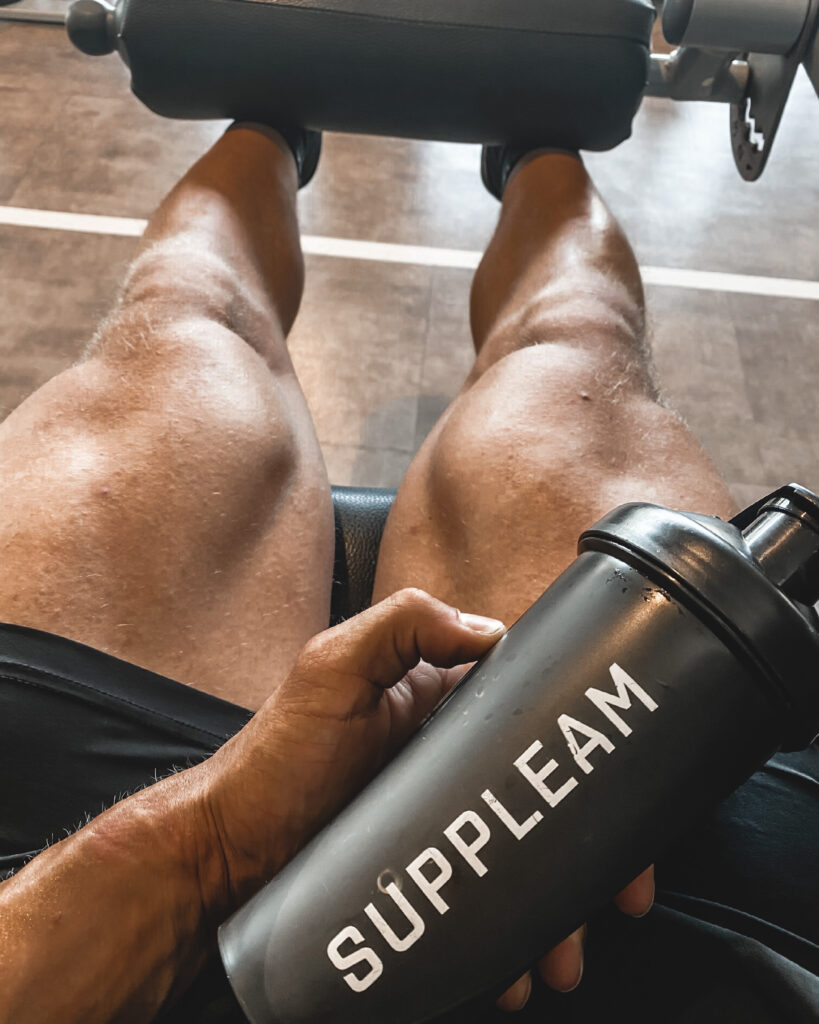
A protein shake after exercising
A familiar sight is a protein shake immediately after exercise. Athletes have several reasons for this:
- To start the recovery process as soon as possible
- Because there is no time to eat a full meal (immediately after exercise).
- Having no appetite and therefore having difficulty eating
- Because it is a tasty, easy, functional and relatively inexpensive source of protein
- To maximize the results of resistance training / strength training and build as much muscle mass as possible
The “anabolic peak” or “anabolic window” for maximum muscle mass gain?
Strength athletes in particular are looking for ways to consume proteins immediately after training. They hope to take full advantage of the “anabolic peak” or “anabolic window” that training causes by quickly providing the body with the necessary amino acids (building blocks of protein) to support the recovery process maximally and quickly.
While a workout naturally stimulates muscle recovery and build-up, you want to remember this:
1. We build muscle mass for a longer period of time after training. The anabolic peak is not something to be urgently pursued as it takes longer than we thought. At least 2 hours (after training). In fact, a recent study indicates that the body is highly receptive to recovery after resistance training/strength training 5-12 hours after exercise. (1) This means that more often (every approx. 3-4 hours) a dose of protein can be beneficial if you want to get the most out of your training.
2. Don’t just focus on protein intake immediately after training. The daily muscle mass build-up (protein synthesis) is in fact the highest with regular (every approx. 3-4 hours) intake of a moderate amount of protein (approx. 20-50g, depending on the source). Of course with regular intensive resistance training / strength training;
3. The total amount of protein intake is the most important factor that can regulate and influence muscle mass building and recovery (protein synthesis). So make sure your priority lies in getting your daily recommended protein intake.
For recovery during strength training, more muscle mass and less fat mass, this is approximately 1.6-2.4g protein per kg body weight per day. For recovery during strength training, more muscle mass and less fat mass, this is approximately 1.6-2.4g protein per kg body weight per day.
Type of protein shake: isolates or hydrolysates?
Protein shakes are made from protein isolates or hydrolysates.
- Protein Isolates are a concentrated form of protein. They have been stripped of (as much as possible) fats and carbohydrates, leaving behind a concentrated source of protein. Isolates are absorbed relatively quickly and well by the body. Protein powder isolates become a creamy/milky shake when mixed with water or plant-based milk.
- Hydrolyzed proteins go the extra mile. They are further “cut up” with the result that the body can absorb them relatively faster and better than protein isolates. As a result, they are often better tolerated during training. Hydrolyzed protein powders become a lemonade protein shake when mixed with water.
Most of the time, both protein shakes won’t cause any Gi-discomfort during low-intensity (strength training) sessions. This makes protein shakes a popular choice among experienced bodybuilders before, during and just after training.
| Morning Cardio Duringgentle incline walk on a treadmill for 30-45 minutes | Essentiële aminozuren (EAA’s) of gehydrolyseerde eiwitten met EAA’s |
| Pre-workout meal | 50g Oats 40g Protein Powder 200g liquid eggwhites |
| Intra-workout | Without any food or Essential amino acids (EAAs) or hydrolyzed proteins with EAAs |
| Post-workout meal | Protein shake with water Later a complete protein-rich meal 200g White fish 150g Cooked weight white rice 100g asparagus 20g almonds or vegan 300g tofu 100g cooked weight white rice 100g asparagus 20ml low sodium soy sauce |
*”Shredding” is a popular term within fitness and bodybuilding. It refers to the period when a person reduces his or her body fat with the aim of achieving a drier and more defined appearance.

Protein shakes can cause stomach and intestinal complaints before or during high-intensity workouts!
In the case of high-intensity (endurance) sports, such as crossfit, spinning or running, a protein shake during training may cause gastrointestinal complaints. This is something that needs to be tested! Not everyone can tolerate a protein shake just before or during an intensive workout. You should also ask yourself whether a protein shake should be a priority during your training. If your goal is to perform optimally, carbohydrates may be a better choice before or during high-intensity exercise. For this reason, many people prefer to consume protein shakes only after training
A vegan protein shake has a hidden advantage
A high quality vegan protein shake contains ample amounts of essential amino acids. This is especially useful for people who eat a lot of plant-based food and also want to maintain or build muscle mass. Essential amino acids are important. Leucine seems to be the most important essential amino acid for muscle mass building. Extra essential amino acids become extra interesting for people who eat a lot of plant foods, as they often occur in lower amounts in plant foods. By drinking a high-quality vegan protein shake after exercising, you are assured of easily obtaining larger amounts of essential amino acids (including leucine) in the correct dosage. After exercise you want to consume 20-50g of protein (this depends on your daily protein requirement and type of protein source) with at least 2g of leucine.
Pro tip: If your recovery meal is 100% vegan, choose to build one with 30-50g of protein.
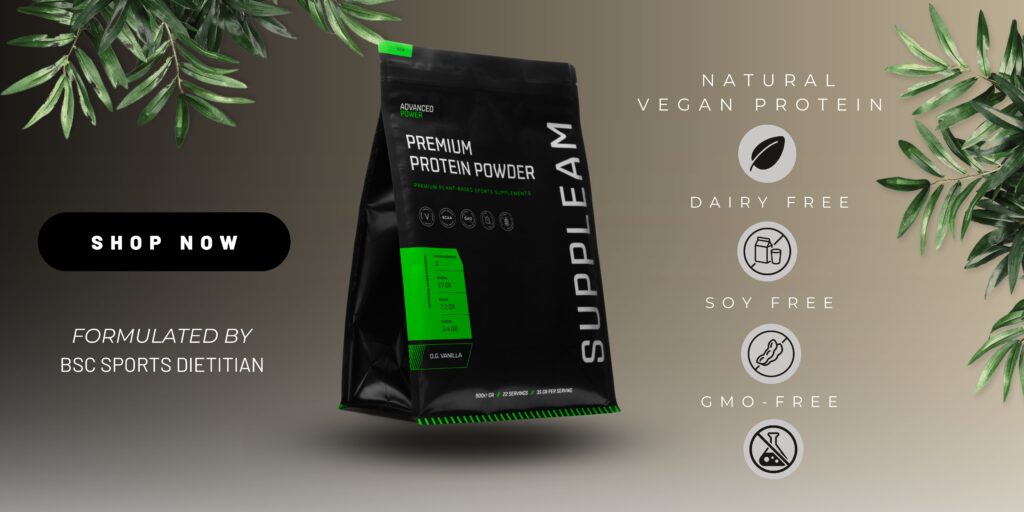
This is why you want to distribute proteins throughout the day
While a post-workout protein shake can be beneficial, it is also essential to pay attention to overall protein intake throughout the day. This is important for several reasons:
- Firstly, this helps to get the proteins you need in a day more easily and in a more gradual way.
- Second, there is no storage mechanism for amino acids, as is the case with carbohydrates, which is called glycogen. Unlike carbohydrates, amino acids cannot easily be extracted from an ‘amino acid storage’ when they are needed.
The body decides when it wants to use amino acids for muscle repair and building. For this, sufficient amino acids must be available during the day. By consuming proteins throughout the day, you create a continuous supply of amino acids that are available to be used. Dividing proteins over several meals and snacks therefore ensures that the body is constantly supplied with amino acids (building blocks of protein), which contributes to more efficient recovery and muscle building.
A protein shake does not solely have to be useful during exercise, but can also be used at another time. Think, for example, of breakfast, lunch or as a snack. You can opt for a simple protein shake with water or vegetable milk as a snack, but you can also opt for a protein-rich meal smoothie.
Conclusion
Choosing the right time to drink a protein shake depends on your goals and lifestyle. Whether you are training for muscle building, aiming for fat loss or simply want to increase your protein intake, protein shakes can be a valuable addition to a healthy and balanced diet and can be used at any time of the day.
Frequently Asked Questions
- Is it necessary to drink a protein shake every day?
No, it is not necessary to drink a protein shake every day. It is important to maintain a varied diet and get nutrients from different sources! In very specific cases, a daily vegan protein shake is recommended as an addition to a healthy diet. For example, a vegan bodybuilder who cannot tolerate legumes (including soy) and gluten and is trying to lose fat mass. In this case, due to lifestyle choices and nutritional sensitivities, it is very difficult to meet the increased protein requirement without protein shakes.
- Can I use protein shakes if I don’t do intensive workouts?
Yes, protein shakes can also be helpful for people who don’t do high-intensity workouts. They can serve as meal replacements or snack options. Protein shakes are a means to easily provide everyone with protein.
- How much protein do I need per meal?
This depends on your goals and needs. It is generally recommended to consume between 20-50 grams of protein per serving. Converted to protein powder, that is approx. 30-70g protein powder. However, this depends on the specific protein powder and whether or not you use soy or pea drink to make the shake. This also contains proteins, so you need less protein powder.
Sources
- Areta JL, Burke LM, Ross ML, Camera DM, West DW, Broad EM, Jeacocke NA, Moore DR, Stellingwerff T, Phillips SM, Hawley JA, Coffey VG. Timing and distribution of protein ingestion during prolonged recovery from resistance exercise alters myofibrillar protein synthesis. J Physiol. 2013 May 1;591(9):2319-31.

